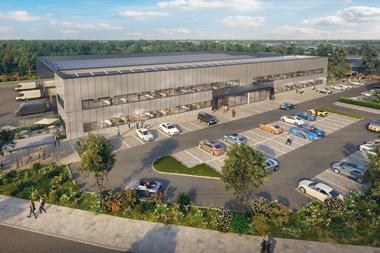Office design is inexorably linked with changing societal values, and big events such as Covid-19 can shake up the status quo and make this abundantly clear.

A knee-jerk response to the current situation has led to some calling the office obsolete, but while some may be declaring the office dead from their generous home offices, others are currently working from their kitchen table, balancing their spaces with roommates or children.
The office remains a vital source for workplace culture, socialising, sharing ideas and learning from one another. Beyond facilitating the convergence of hospitality and leisure into our workplaces to allow for these interactions, the office helps accommodate a full spectrum of worker needs.
The reality is that the office as we know it today has emerged in response to reductive, siloed principles that dominated design over the last century. While the ‘home office’ may in a way represent the ultimate ‘live,
work, play’ convergence, simply deeming work from home a one-size-fits-all solution ignores the fact that comfortable working from home is not accessible to all. The office is not dead – although it is changing — and to gain a better understanding of what the future of office design might look like post-pandemic, it must first be understood as an evolution.
‘Modern’ offices
What we think of as the ‘modern office’ emerged in the early 20th century as a by-product of industrialism, borrowing a ‘factory-line’ approach that drew upon the work of Frederick Taylor. This produced the first ‘open-plan’ offices, in which employees worked at desks in large open spaces. Post-war, this concept evolved to reflect the ethos of modernism, championed by designers such as Frank Lloyd Wright, whose Johnson Wax Building designs offered a vision of expansive open-plan floorplates, clean lines and lack of unnecessary ornamentation.

These aesthetics went hand in hand with embracing efficiency and advances in technology, and for offices this meant building off the principles of Taylorism to promote mechanisation. At the urban scale, this approach was realised as the separation of places allocated for specific functions, epitomised by the widening divide between workplace and home. This siloed approach, however, came at the price of wellbeing; offices did away with the ‘unnecessary’ to improve efficiency — even windows were sometimes deemed unnecessary after technological advances in fluorescent lighting.
The backlash to these mechanised offices eventually led to worker advocacy for wellbeing, and in many ways, what we have seen up until the onset of Covid-19 has been a culmination of the reaction against these principles. In the last decade, wellness has been increasingly relevant, with gyms, biophilia and sustainability a workplace priority.
Taylorism and modernism make the mistake of oversimplification, thinking of workers as a monolith and assuming that a single approach to the workplace works for everyone. But there is no one-size-fits-all workplace, and different geographies, cultures, communities and individuals all have different requirements for what makes a good workplace. We must maintain accessible, flexible offices as a key resource toward this end.
A workplace culture that allows choice, cultivates teamwork and trusts in employees enables efficiency and productivity to meet happiness and wellbeing. Employee autonomy is what is needed to enable the pursuit of workplace excellence, so perhaps the workplace of the future is defined less by location and more by choice.
Helen Berresford is head of ID:SR and partner at Sheppard Robson
































No comments yet